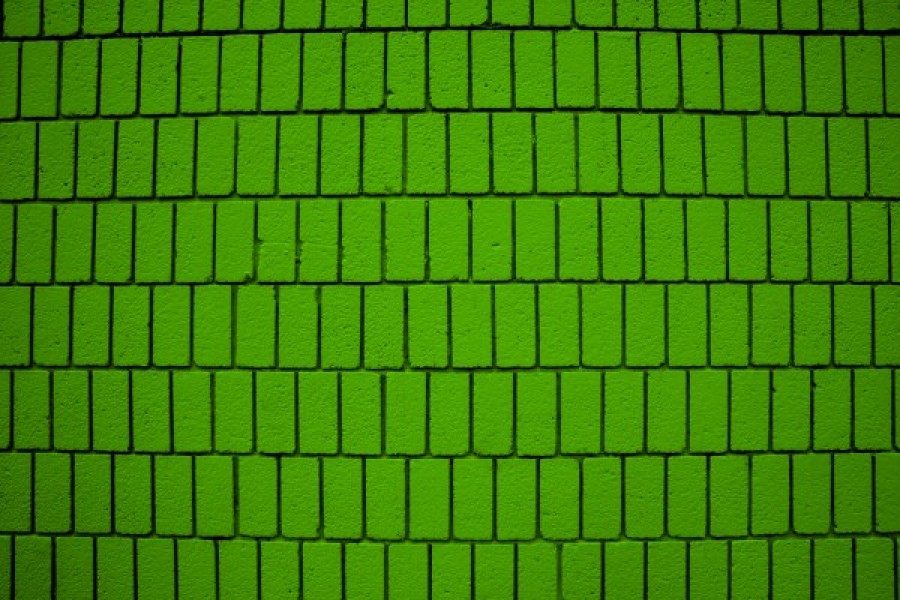The innovation of alternative brick as a departure from bricks produced in traditional kilns is a laudable initiative given the disastrous effect that the toxic smoke emitting kilns cause to the environment and farmlands all over the country. Clean bricks or green bricks, as they are called, are being used in many countries not only as a substitute for kiln-baked bricks but also as a cost-effective material for construction. A local daily has recently reported on the use of compressed earth blocks made of soil and cement as an alternative to bricks produced in the kilns. Beside being environment-friendly, use of these bricks is believed to reduce construction cost by around 25-30 per cent.
The government's Housing and Building Research Institute (HBRI), according to the report, has initiated the move by demonstrating the beneficial effects that can be had from the green bricks. These bricks made from mixing cement and soil dredged out of rivers is produced without baking in kilns reducing pollution and harm to arable lands.
The HBRI has been in the process of producing the alternative brick for some years now and some government and private organisations have already started using these bricks. The important thing about these bricks is that in the production process there is no use of topsoil and firewood, and hence these are pollution-free.
Sprouting of brick kilns irrespective of locations has been on the rise for decades, facilitated largely by the absence of any enforceable rules. This is not to say there was no law governing brick making. The Brick Burning (control) Act 1989 had its inadequacies to dictate terms in the first place, and besides, lacuna in the enforcement of some of the compliance issues made things worse. Consequently, the practice of setting up brick plants at any location went unopposed.
To part with the practice, the government enacted a law on brick production. The purpose was to check widespread environment pollution as well as save arable land and forest. A new bill got passed in Parliament on brick manufacturing. Later, following the signing of the President, the Brick Making and Brickfield Establishment (Control) Act 2013 became a law. The previous law, the Brick Burning (control) Act 1989 was amended twice in 1992 and 2001, before it was finally replaced by the new law with stricter measures. The new law has introduced tougher regulations for brick production, including the provision of trial for offences under the penal code. Previously, offences were tried in the environment court.
According to the Department of Environment, there are about 6,356 brickfields in the country. However, environmentalists claim the number to be as high as around 10,000, and half of them are located around the capital. According to a report of the Asian Development Bank (ADB) in 2016, the country produces 22.71 billion pieces of bricks annually. In doing so, a World Bank report says, the brick kiln sector consumes 3.5 million tonnes of coal and 1.9 million tonnes of firewood, emitting 9.8 million tonnes of greenhouse gas annually.
From what observers and environmentalists point out, one of the grim realities is that brick fields across the country are getting increasingly invasive in grabbing the country's less than sufficient arable lands. More dangerous is the threat that comes in terms of affecting neighbourhood lands under cultivation because of the heat, caustic smoke and dust generated by the brick making plants. Reportedly, more than 6.4 million tonnes of carbon emissions are caused by the brick kilns annually. The law mentioned above stipulated certain strict restrictions on brick making, meaning the way the brick makers are to conduct themselves. This, as things stand now, did not work --mainly because of the highly demand-driven nature of the construction sector and lack of enforcement.
Now, with green technology at hand, things are different. At least, it offers the scope for eco-friendly brick manufacturing and because of the superior technology and cost-effectiveness, chances are high that the alternative brick will gain popularity. The initial cost of the technology is reportedly high. But keeping in view its efficiency, cost-effectiveness, high scale of production and above all emission-free mechanism, it is highly imperative that the government gradually phase out the traditional kilns and provide necessary support by way of soft-term financing to encourage the green technology. Simultaneously, incorporating a provision for use of green bricks in the National Building Code may serve well to encourage application of the new technology.
Given the eco-friendly manufacturing process as well as other beneficial aspects, green bricks should be subjected to intensive scientific research and examination to highlight its merits, taking into account all technical pros and cons.


